This easy pichi pichi recipe will help you make authentic Filipino pichi pichi at home. Soft and chewy, coated with coconut or cheese, one hundred percent delicious.
(Looking for other cassava or kamoteng kahoy recipes? Try this cassava cake with macapuno. Soft and tender with a perfectly burnt sweet topping. It’s one of my favourite Filipino desserts!)
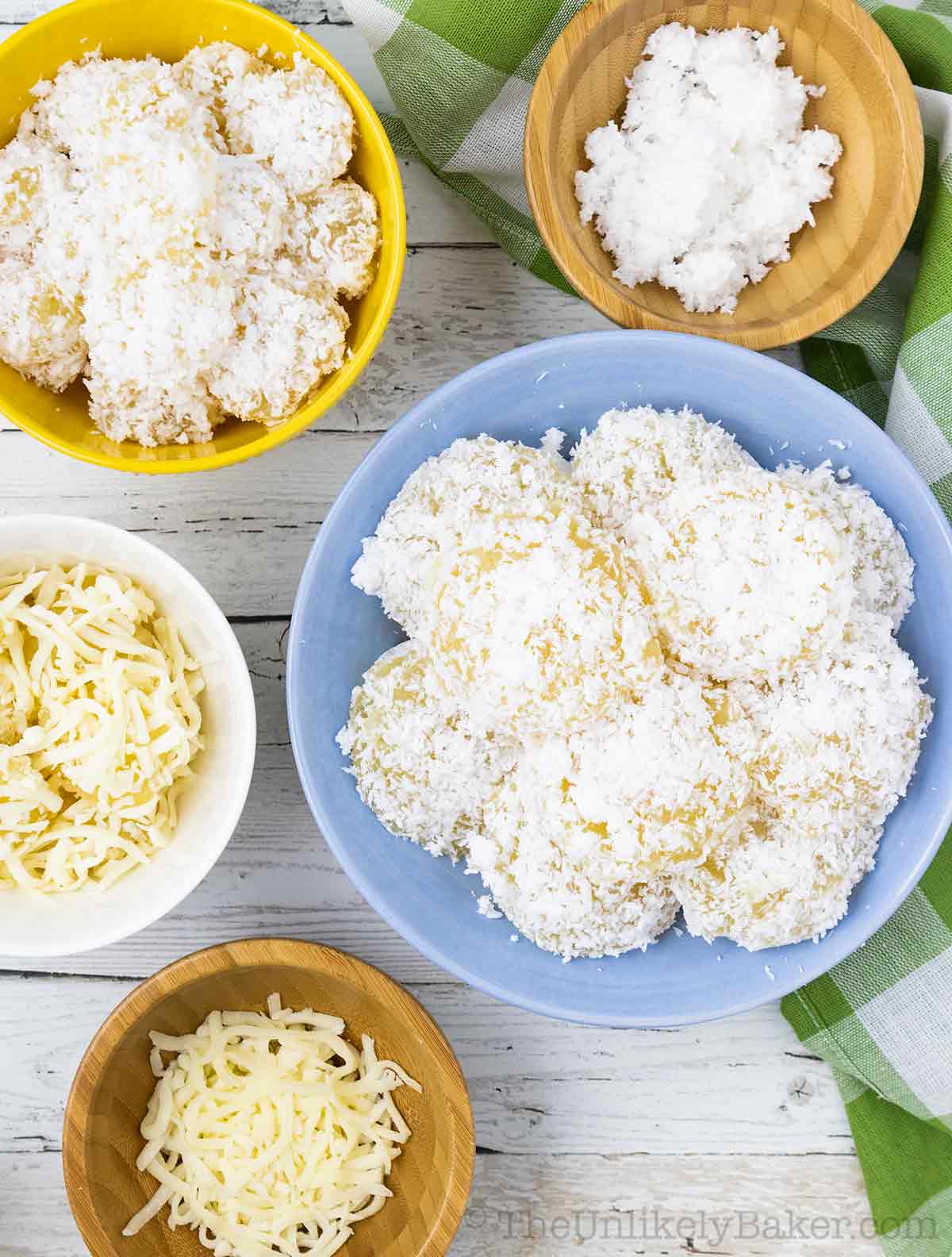
First of all, what is pichi pichi?
Pichi pichi (pronounced like peachy-peachy but faster) is a traditional Filipino kakanin or delicacy made of grated cassava, sugar, pandan water and lye water.
They are steamed until they become translucent, soft, gelatinous and sticky. Then they’re rolled in either grated coconut, grated cheese or both.
I think it’s one of the funniest sounding Filipino foods ever but it’s also one of the most delicious.
So easy and simple to make, Filipinos eat it for snack or merienda, or as dessert. Pichi pichi is also served during special occasions like fiestas, birthdays and the holidays.
Let’s get to it.
What is pichi pichi made of
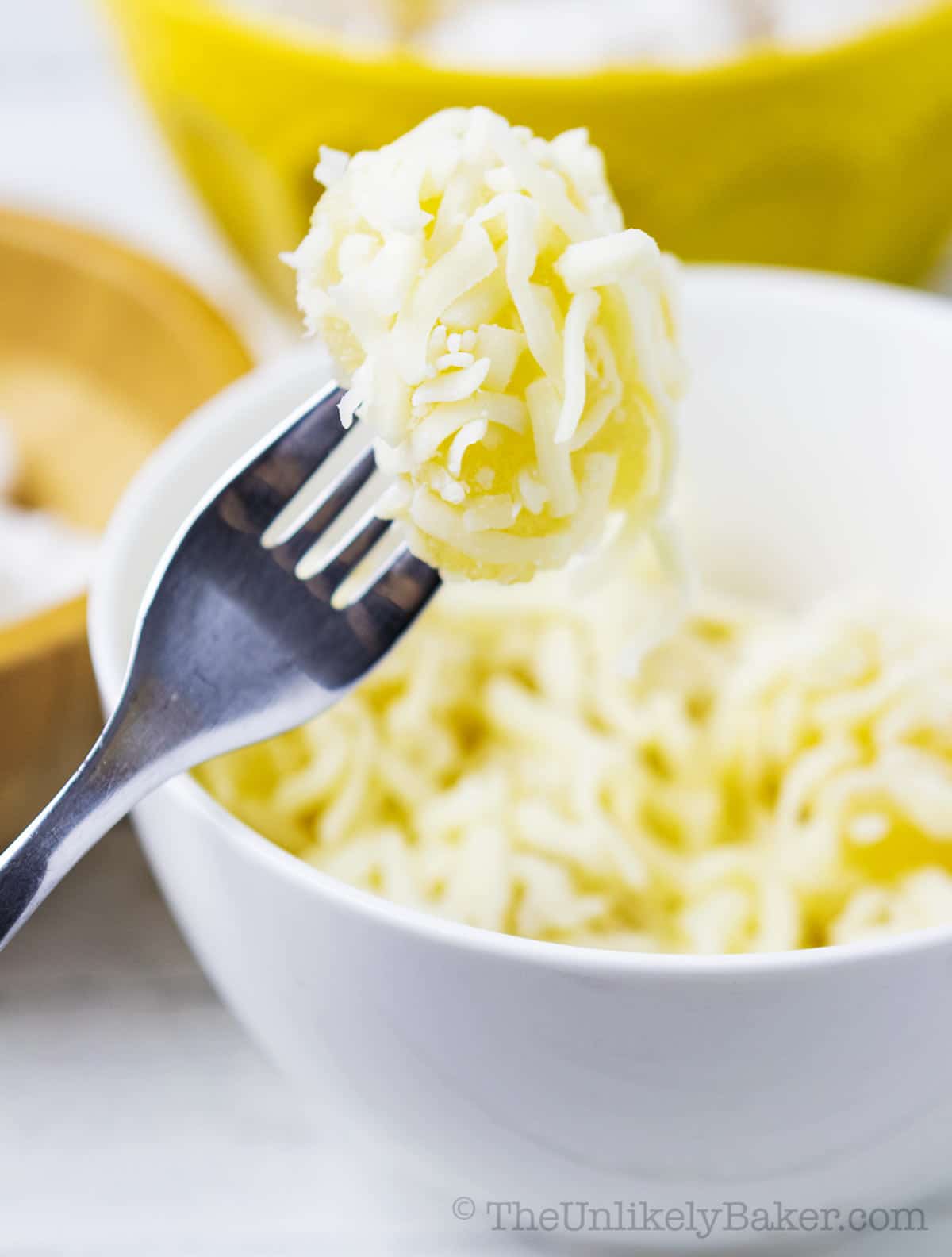
More info on pichi pichi ingredients below:
- Pandan leaves for the pandan water — you can also just use plain water (how to make pandan water below)
- Grated cassava — I always use frozen grated cassava but you can also use fresh cassava if it’s available where you are (more on this in the FAQs below)
- Granulated sugar
- Pandan extract
- Lye water (more info on lye water below)
- Grated coconut or grated cheese for coating — I use frozen grated coconut that I’ve thawed and drained. If you have fresh grated coconut, use that. You can also use unsweetened shredded coconut or coconut flakes in a pinch.
Tools you’ll need
To make this pichi pichi recipe, you’ll need:
- A pot to make the pandan water
- One mixing bowl
- Individual moulds (or a baking pan plus a melon baller)
- Steamer
How to make
This recipe for pichi pichi couldn’t be easier.
1 COMBINE. Place all your ingredients in a bowl and stir until blended well.
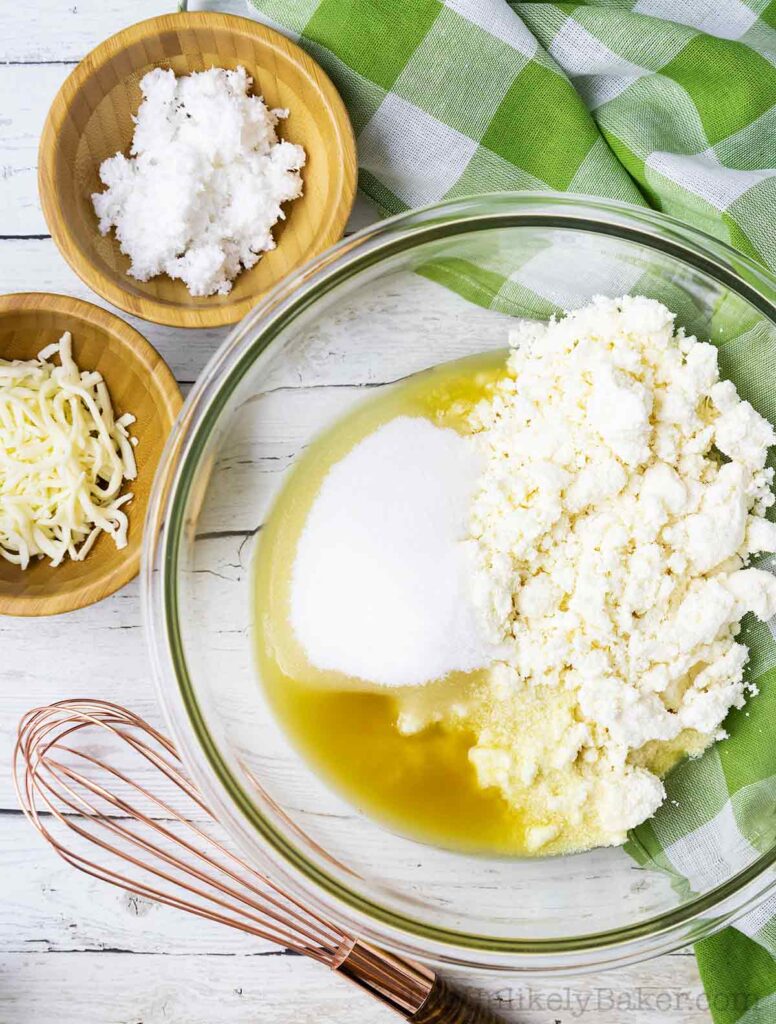
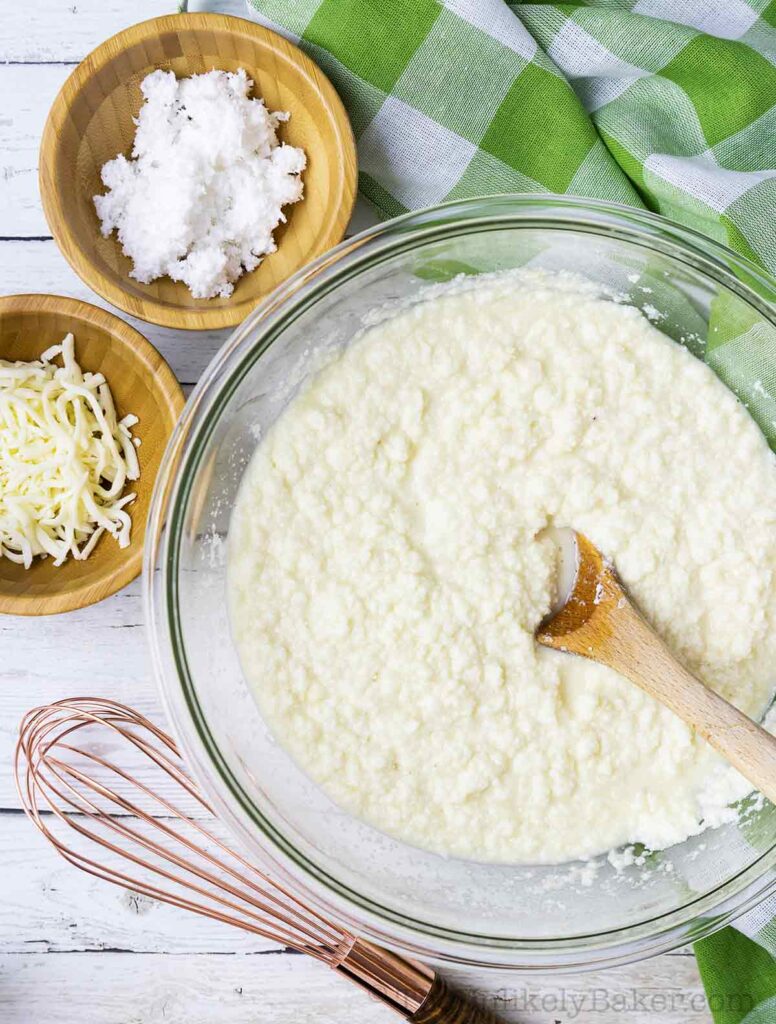
2 TRANSFER. Transfer your mixture into your individual moulds or into a baking pan (whatever would fit into your steamer).
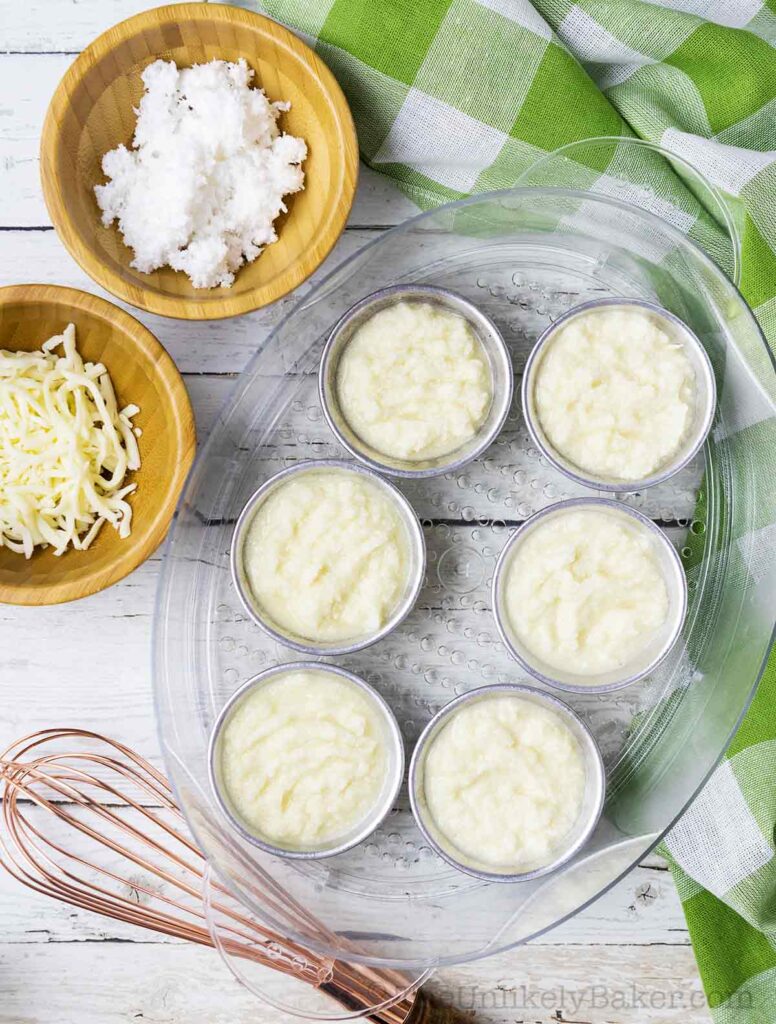
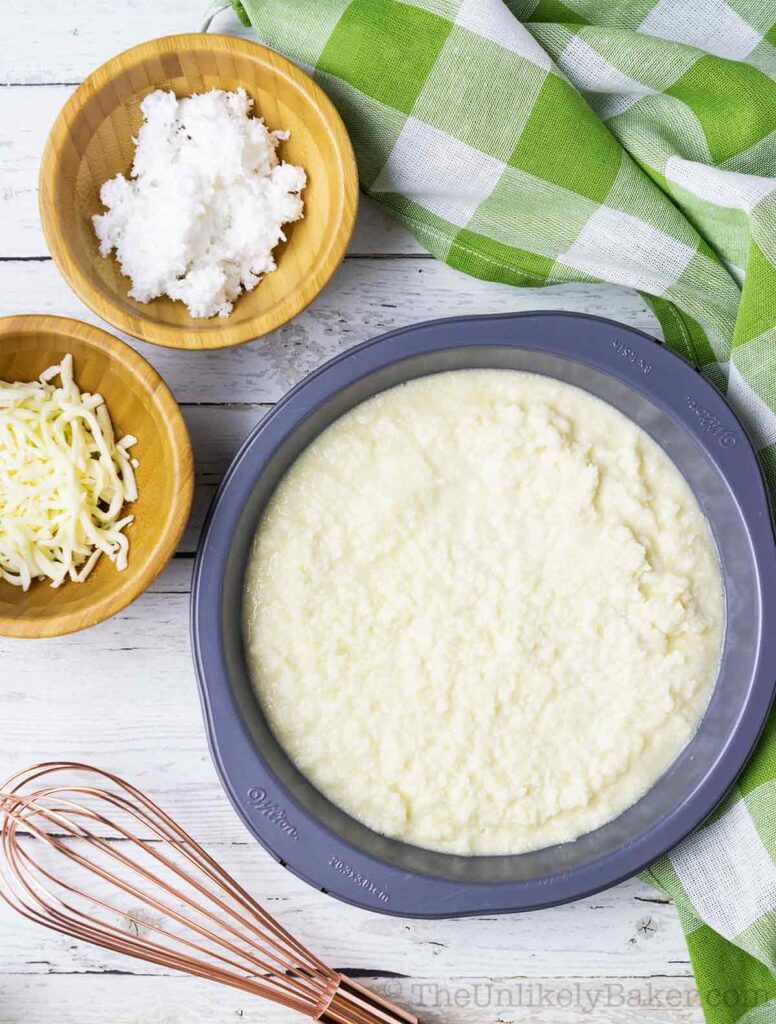
3 STEAM. Steam the pichi pichi until completely translucent, springy and soft to the touch. How long would depend on the size of moulds you use. Make sure to cover the lid of your steamer with a tea towel to prevent the moisture from the steam from raining onto your pichi pichi.
4 REMOVE. Allow to cool completely before removing from moulds or scooping from pan. This would allow the pichi pichi to set completely. If using moulds, gently nudge the pichi pichi free. If using a pan, you can use a melon baller to scoop out pieces of pichi pichi. A cookie scoop for bigger pieces will work too.
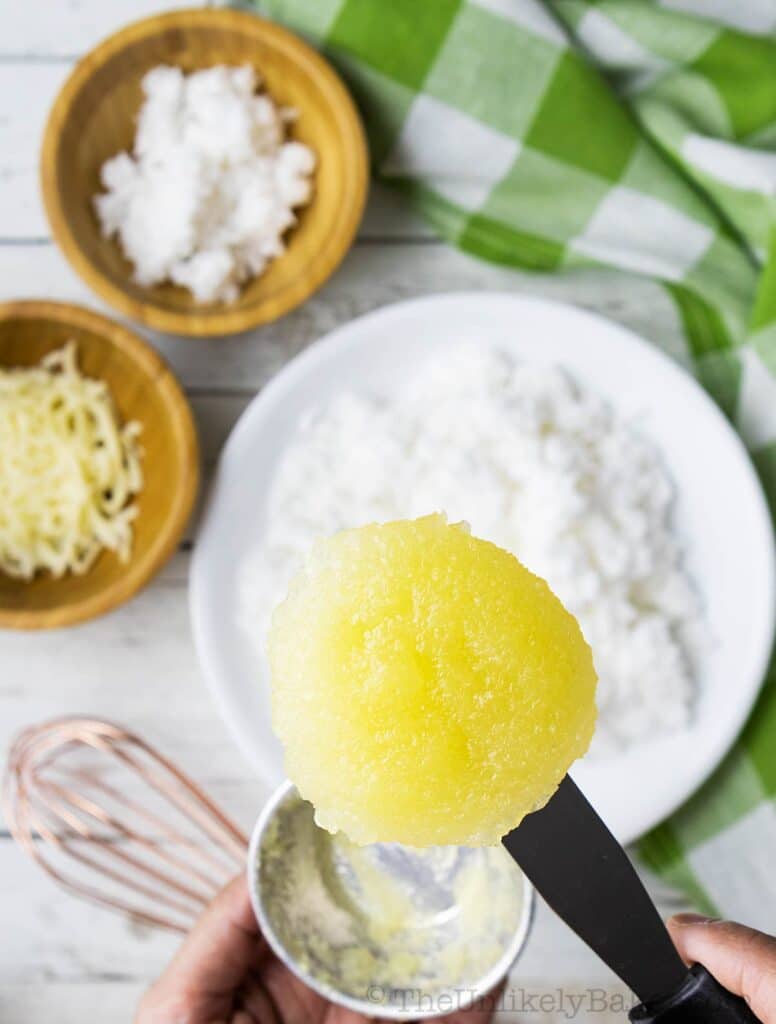
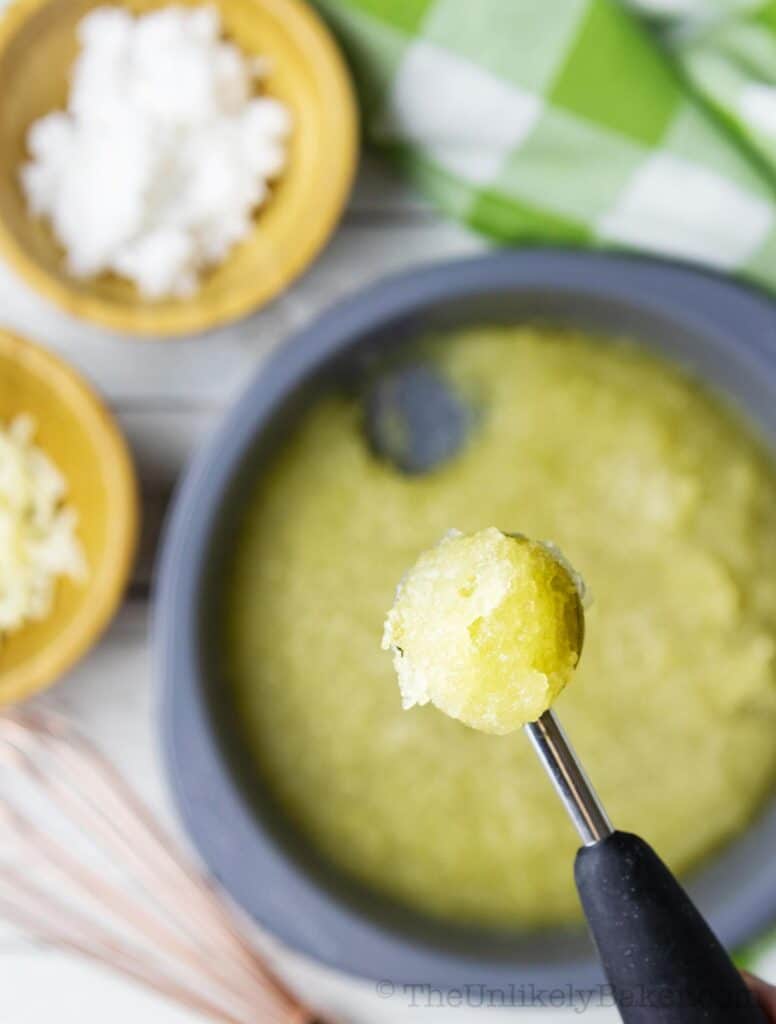
5 COAT. Roll the pichi pichi in grated coconut or grated cheese and enjoy!
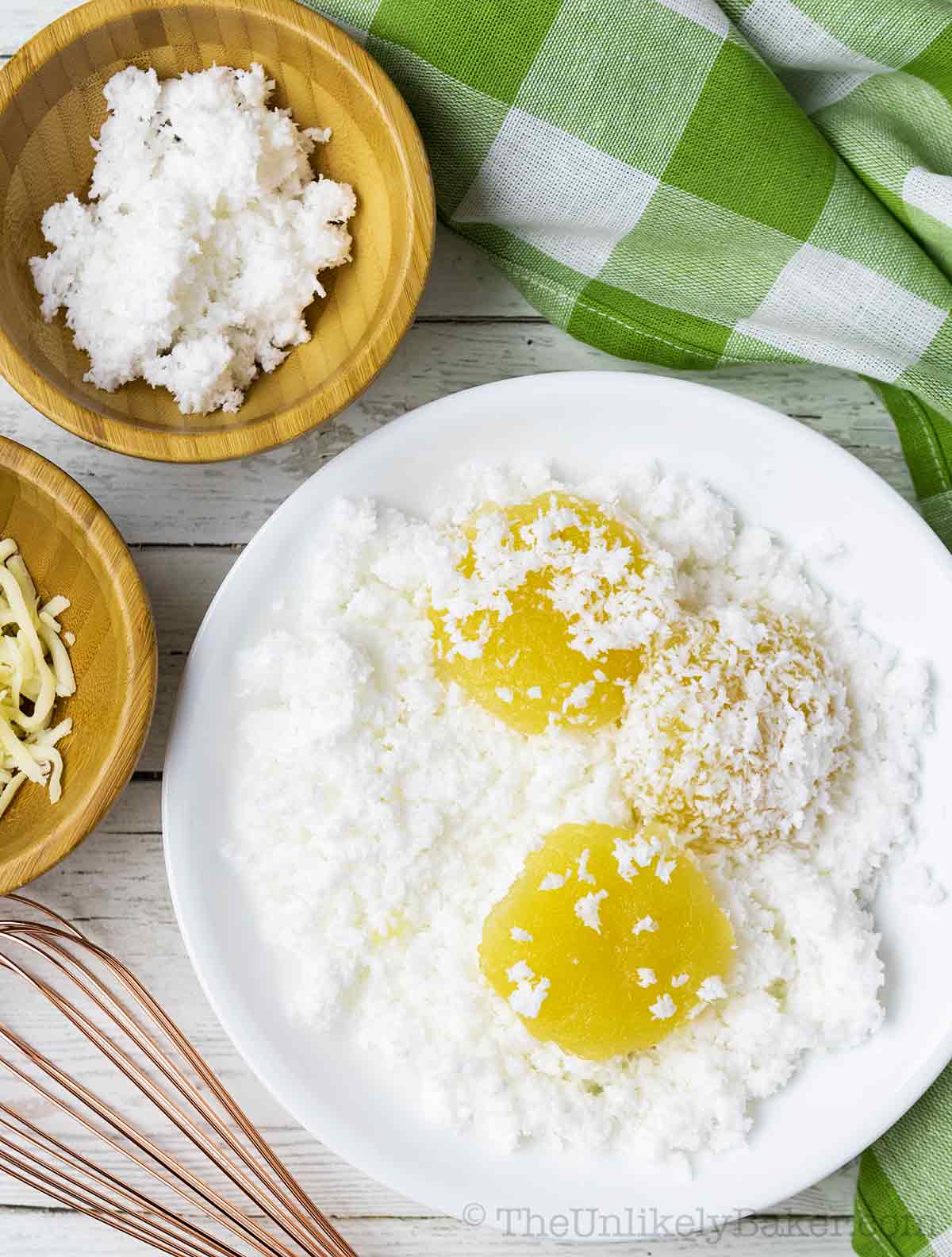
Cooking tips and recipe FAQs
Here are some cooking tips and answers to your frequently asked questions to make this pichi pichi recipe that much easier!
How to make pandan water
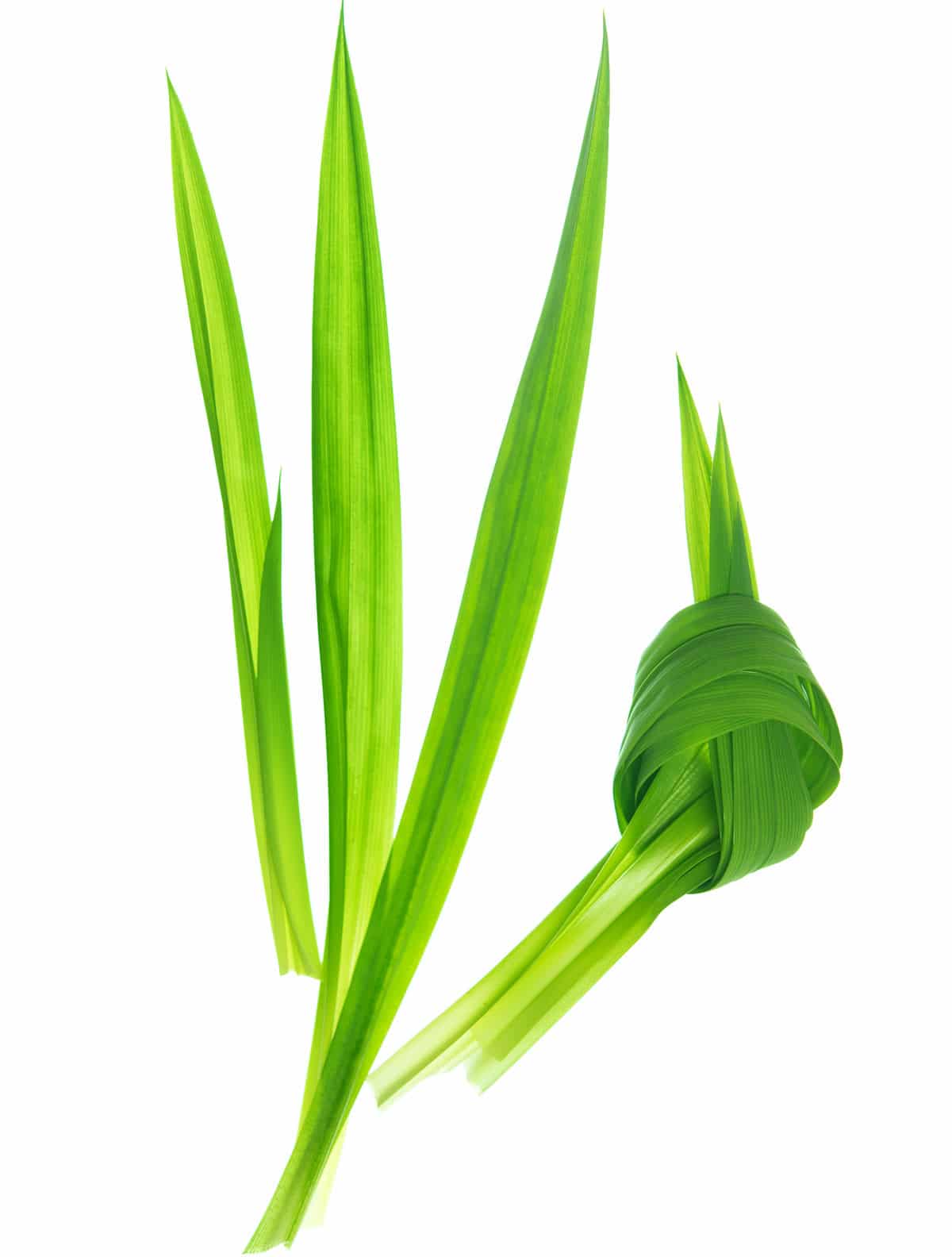
Pandan water is simply water infused with pandan. Making it is so easy:
- Place a bunch of pandan leaves in a pot with water, then bring to a boil
- Bring down to a simmer for about half an hour or until you start to smell that lovely pandan smell.
- Take out the pandan leaves and allow the pandan water to come down to room temperature before using
What is lye water
Food grade lye water is an alkaline solution that contains 80% potassium carbonate and 20% sodium bicarbonate (or baking soda).
It’s most often used in making traditional ramen noodles, giving them that distinct, springy, chewy texture. It’s also a main ingredient in kutsinta, another Filipino delicacy.
In the Philippines, lye water is most often called lihia or lihiya but across Asia it’s known as kansui.
I can usually find lye water in our local Asian supermarket but it’s also available in Amazon. Just make sure you’re buying lye water that’s especially formulated for cooking.
And even then, treat your bottle of lye water with care because it’s dangerous when consumed in large amounts and can cause severe corrosive burns to the throat, oesophagus and stomach with permanent damage if swallowed.
Substitute for lye water
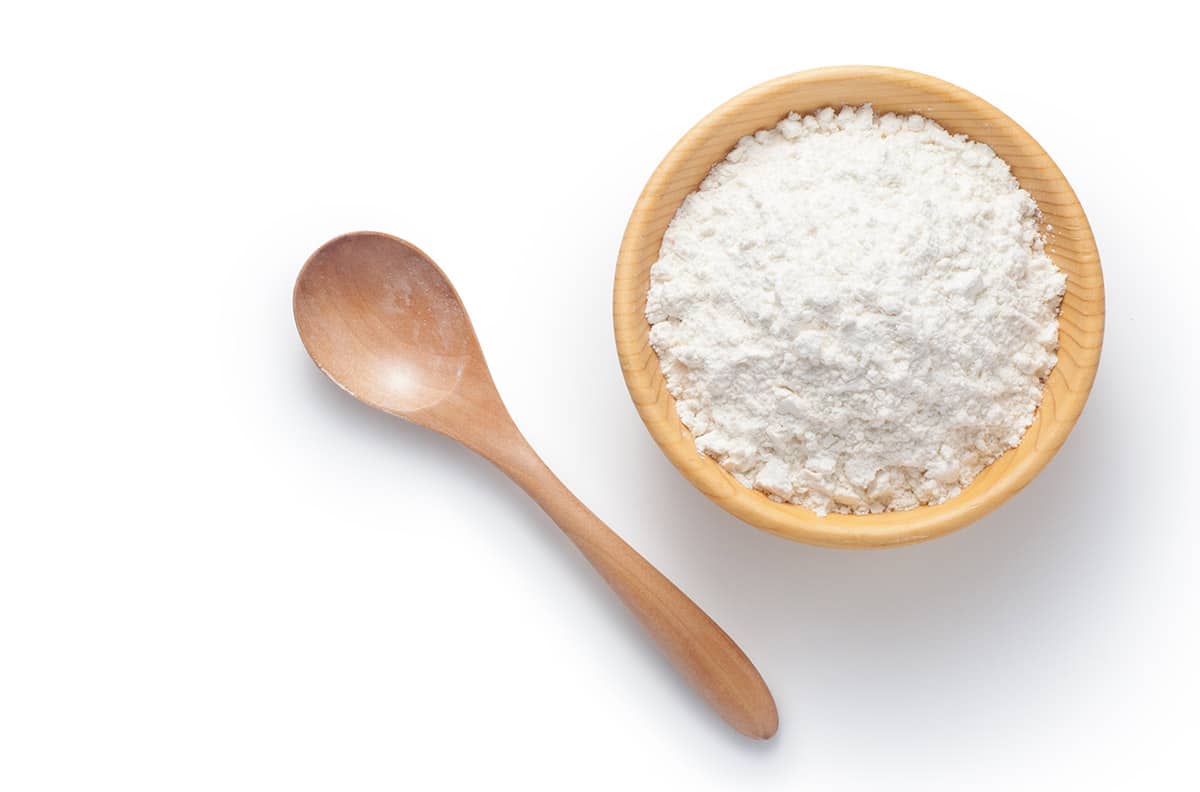
Wary of using commercially made lye water? Good news is it’s pretty easy to make at home using baking soda.
I’ve personally never tried it but this provides lots of information on how to make kansui at home.
How to prepare fresh cassava
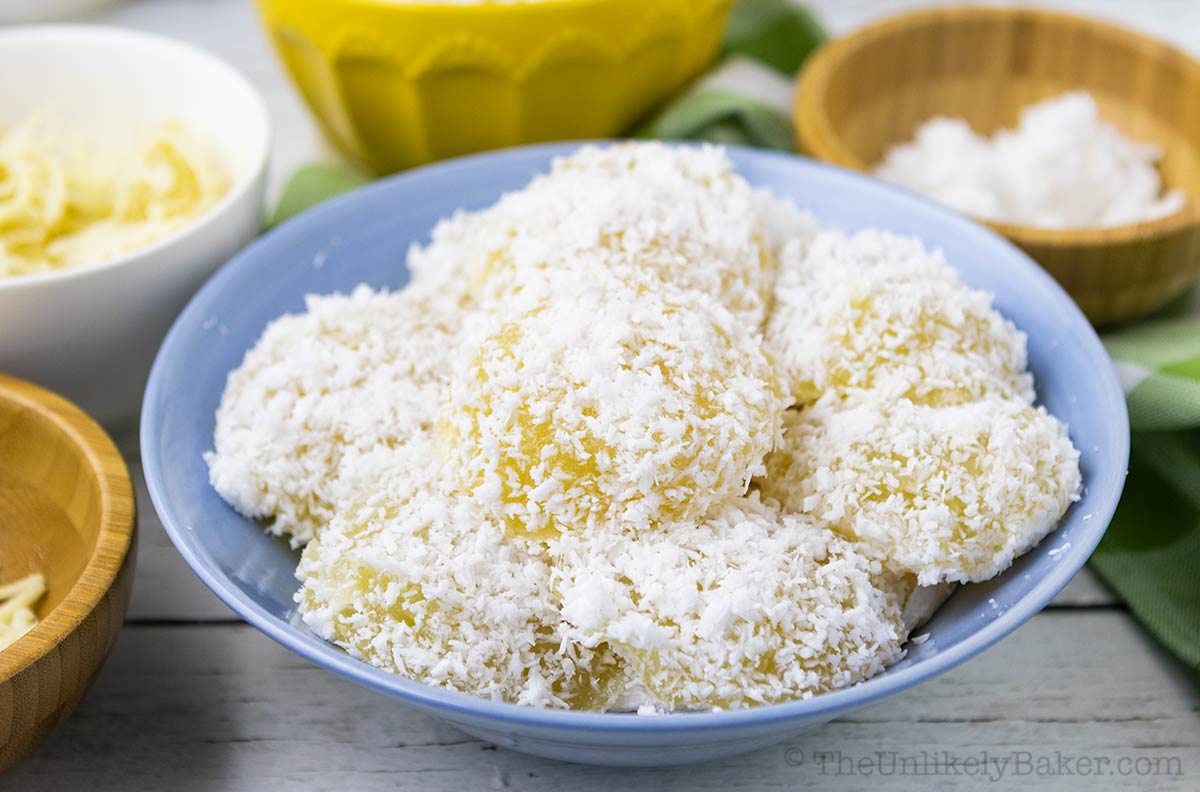
I always use frozen grated cassava in this recipe and it’s always worked great.
Fresh cassava is really not that common here but I remember when my mom would buy from our local palengke or market, she would already have the cassava grated, pressed and drained there.
If you’re prepping fresh cassava yourself, you can follow these steps:
- Wash then peel
- Grate using a cheese grater. The finer, the better. You can also use a food processor
- Place the grated cassava into a cheese cloth and squeeze water from it. It doesn’t have to be completely dry. Just make sure you get rid of the excess water
I only strain frozen grated cassava when I feel it’s too liquidy. Otherwise, I just thaw and use directly.
How to store pichi pichi
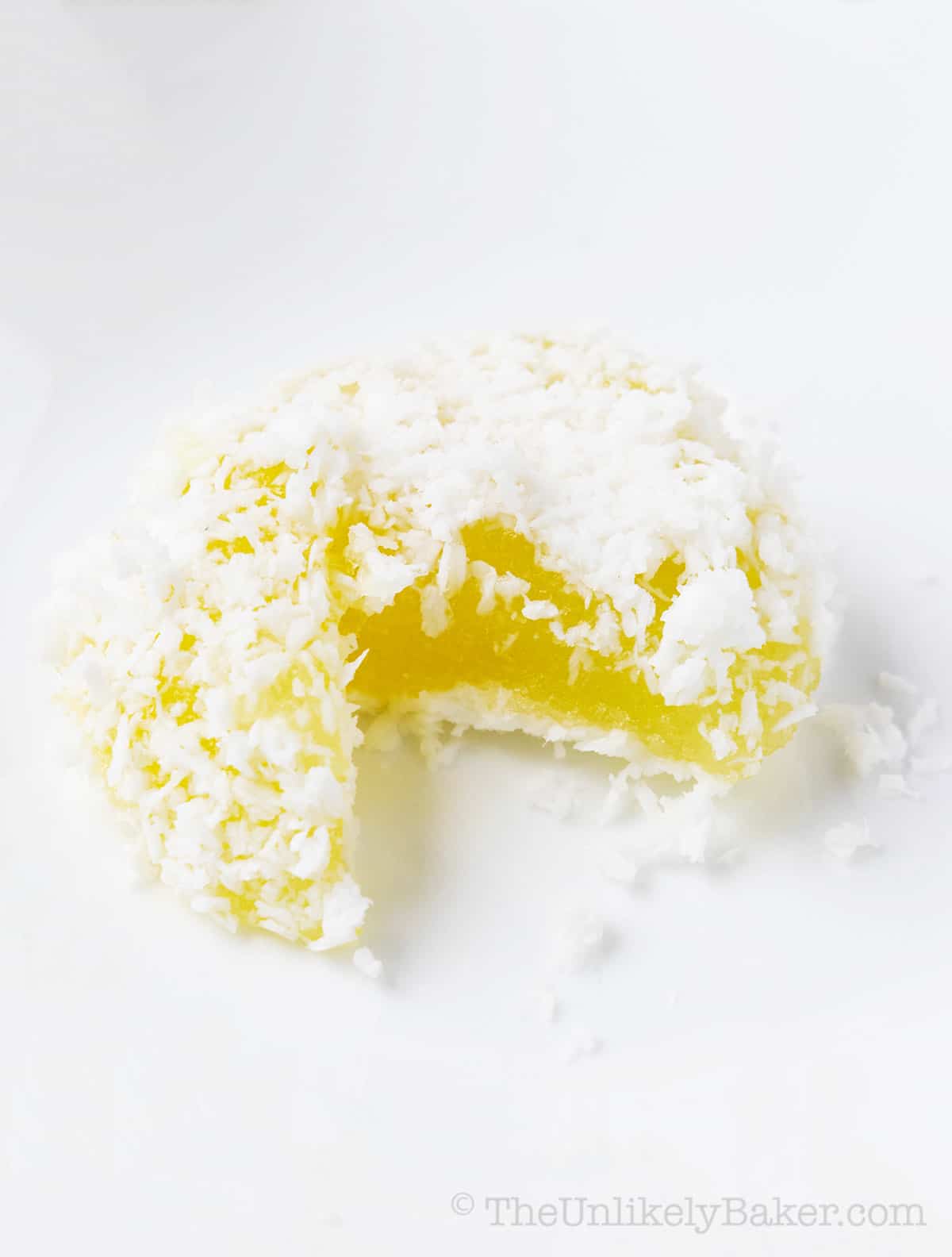
You can keep coated pichi pichi in the fridge for up to 3 days. You can eat it cold, at room temperature or a little warm (microwave for a few seconds).
Note that they will harden the longer they sit so best to consume pichi pichi the day they’re made.
Pichi pichi is so good. Soft and chewy, sweet and salty. It’s very light too and a great alternative to rich, decadent desserts.
I’ve wanted to make some for years but was always intimated by what I thought was a complicated process. If I had known it was this easy to make, I would have learned to make some sooner!
Now it’s pichi pichi time any time. Hope you try it!
Happy steaming!
Did you make cassava pichi pichi recipe? I’d love to hear from you in the comments section below.
If you’re looking for other recipes to use that steamer for, try this delicious puto recipe (Filipino rice cakes) or make this suman recipe (Filipino sticky rice cakes in banana leaves). So good!
And if you love pichi pichi, chances are you’ll love palitaw too. Try this easy palitaw recipe.
Let’s get social! Find me on Facebook, Pinterest, Instagram, Twitter and YouTube.
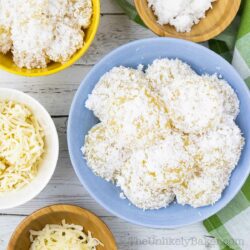
Easy Pichi Pichi Recipe
Ingredients
For the Pandan Water (optional)
- 3 cups water
- bunch pandan leaves
For the Pichi Pichi
- 2 16-oz pack frozen grated cassava thawed, and drained if excessively liquidy
- 1 cup granulated sugar
- 2 cups pandan water can substitute with plain water
- 1 tsp lye water
- ½ tsp pandan extract
- grated coconut
- grated cheese
Instructions
How to Make Pandan Water (optional)
- Place a bunch of pandan leaves in a pot with 3 cups of water and bring to a boil.
- Bring down to a simmer and cook for 30 minutes or until you start to smell that lovely pandan smell.
- Take out the pandan leaves and allow the pandan water to come down to room temperature before using
How to Make Pichi Pichi
- Place all your ingredients in a bowl and stir until blended well.

- Transfer your mixture into individual moulds or into a baking pan (whatever would fit in your steamer).

- Steam the pichi pichi until completely translucent, springy and soft to the touch. How long would depend on the size of moulds you use – from 30 minutes to 1 hour.
- Allow to cool completely before removing from moulds or scooping from pan. This would allow the pichi pichi to set completely.
- Once ready, if using moulds, gently nudge the pichi pichi free.

- If using a pan, you can use a melon baller to scoop out pieces of pichi pichi. A cookie scoop for bigger pieces will work too.

- Roll the pichi pichi in grated coconut or grated cheese and enjoy!

Video
Notes
- Yield depends on how big or small you make your pichi pichi.
- When steaming your pichi pichi, make sure to cover the lid of your steamer with a tea towel to prevent the moisture from the steam from dripping onto your pichi pichi.
- Don’t worry if your pichi pichi doesn’t come out perfectly round out of their moulds. They would still look pretty once you’ve coated them in coconut or cheese.
- See post for more cooking tips, including what to do if you have fresh cassava and more information on lye water.
Nutrition
Nutritional information are estimates only.

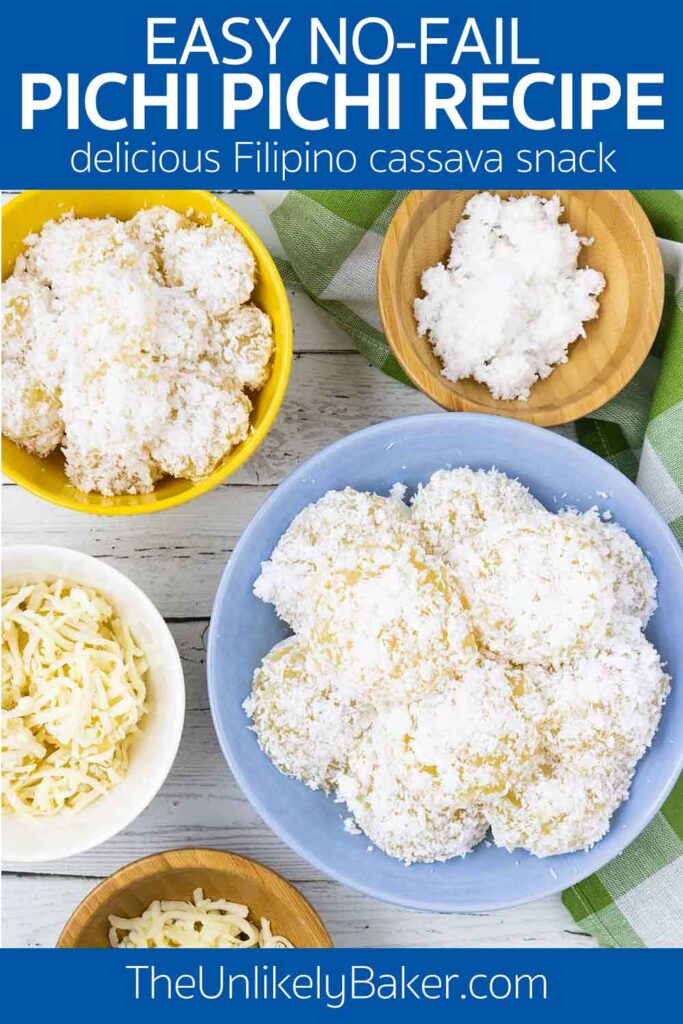
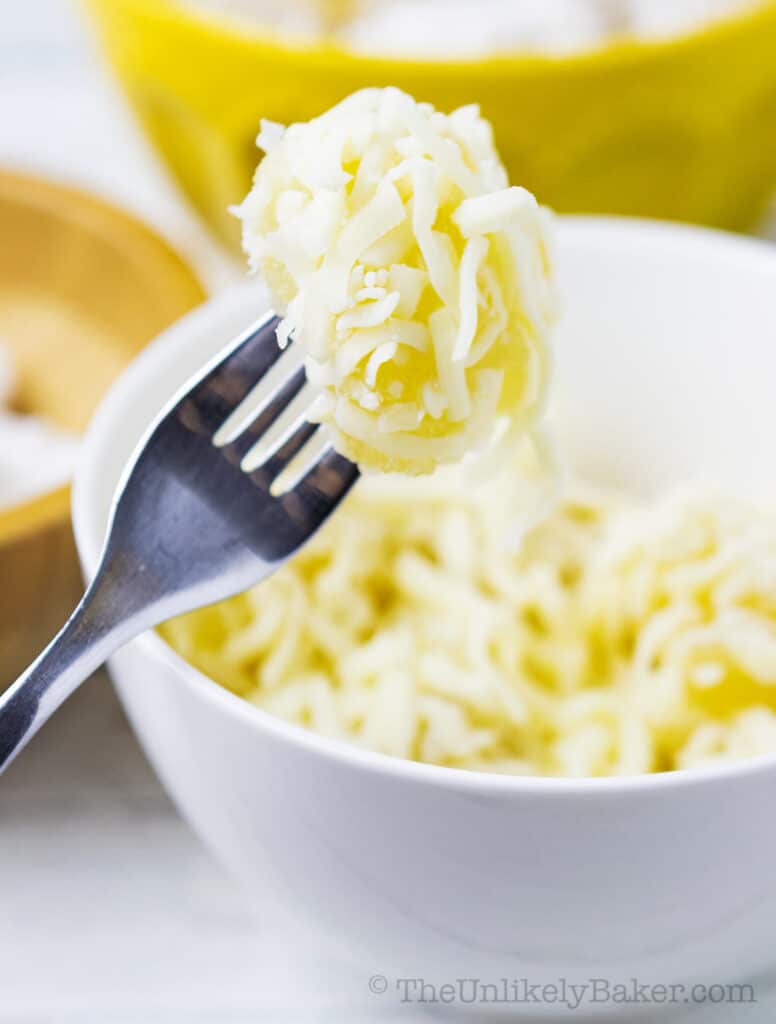
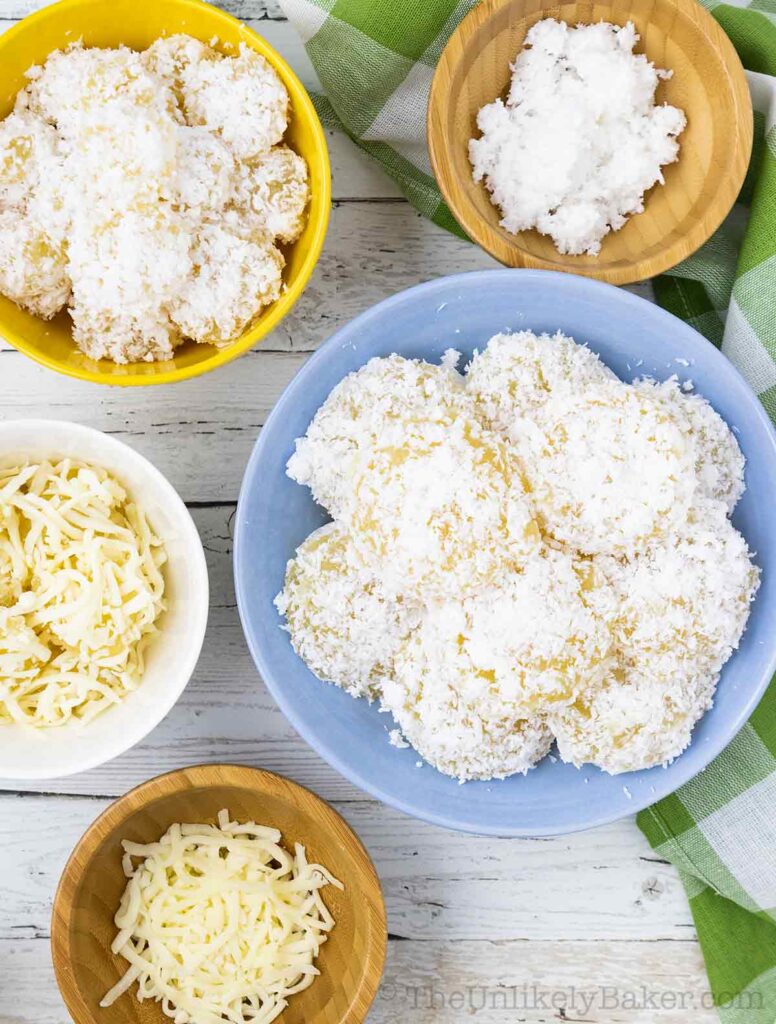
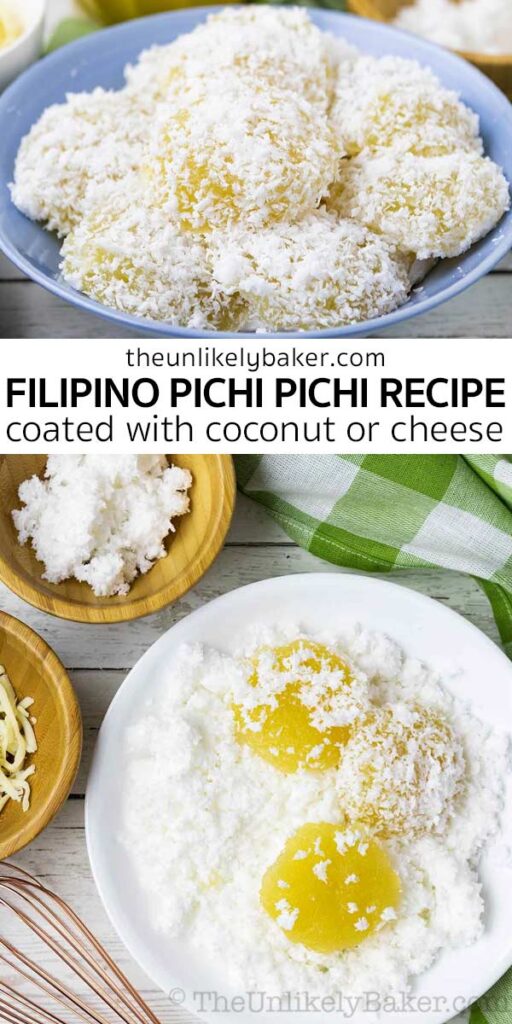
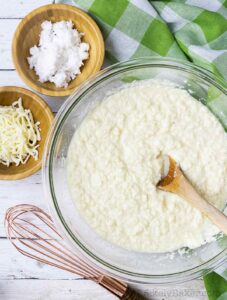
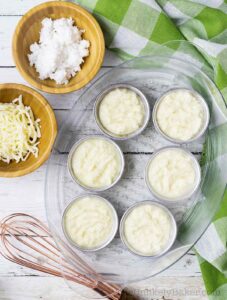
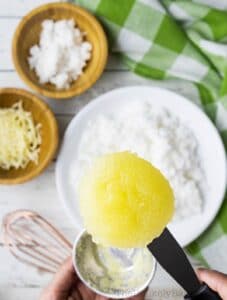
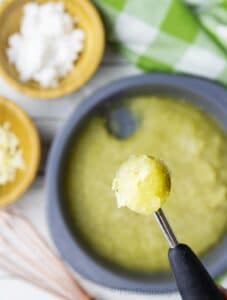
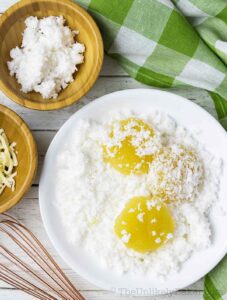
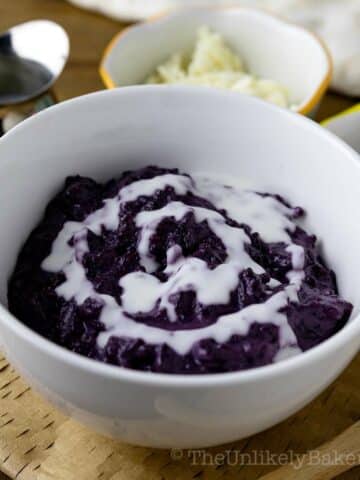
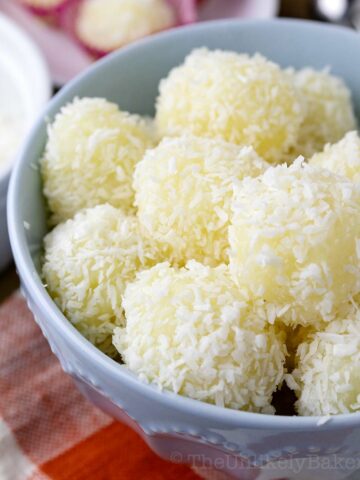
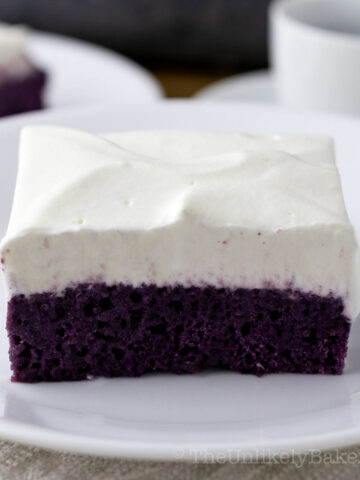
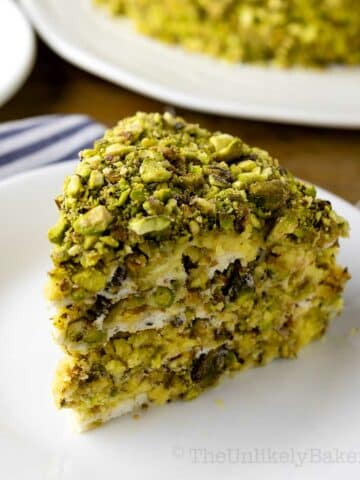
Nora
Cassava root has cyanide. You are suppose to soak it in water fro 4-6 hours to get rud of the cyanide. That’s why I make my own. Your recipe is good, but i still soak my frozen cassava. Thank you
Jolina
Agreed! Cassava must not be eaten raw and must be cooked properly.
Jere Cassidy
This recipe is all new to me and loved reading your post to understand this Filipino cuisine. Would love to try this.
Sharon
This looks like a fantastic recipe for authentic Filipino food. The step-by-step photos are so helpful.
Anna
I haven’t even thought about pichi-pichi for so long I didn’t realize how much I miss it. My mom would make this from scratch. As soon as I can find lihia I’ll make some. Thanks!
Emily
I always order pichi pichi! I like how it’s not too sweet and it fills me up fast without going hard on my wallet hehe. Maybe I’ll make some from home soon.
Tonette
Hi Jolina, I never leave comments anywhere but I want to thank you for this recipe. I’m a Filipina living abroad too and I’m always craving for kakanin. I made pichi pichi and they were delicious! I even used eden cheese for the topping. I will make them again and again and planning on giving away some for easter. I can’t wait to try your other recipes. Happy easter to you!
Jolina
So happy to hear that Tonette! Happy Easter 🙂
Diana
I’m curious about different cuisines and always interested to try! It’s a little difficult for me to find the ingredients but pichi pichi is something I definitely want to taste. Looks delicious!
Lalaine
This brings back so many memories Jolina! Pichi-pichi is one of our favorite merienda, in addition to kuchinta, puto and palitaw. Hope to make some soon.
Jolina
I’ve actually been craving for palitaw for the longest time lol! Hope to make some of that soon 🙂
Kate
Ooh, I’ve not heard of pichi pichi – but it sounds absolutely delicious. I definitely want to give this recipe a try!
Stephanie
I’ve never heard of these before, but they look delicious! Lately, anything with coconut has been a winner in my house, so we would love these. I’ve never heard of cassava, though, so I will have to see if I can find it near me.
Edna
@Stephanie, cassava is also yucca
Andrea
What an interesting dish! It looks soft and chewy too. Appreciate the info on lye water as it’s something I’m not very familiar with.